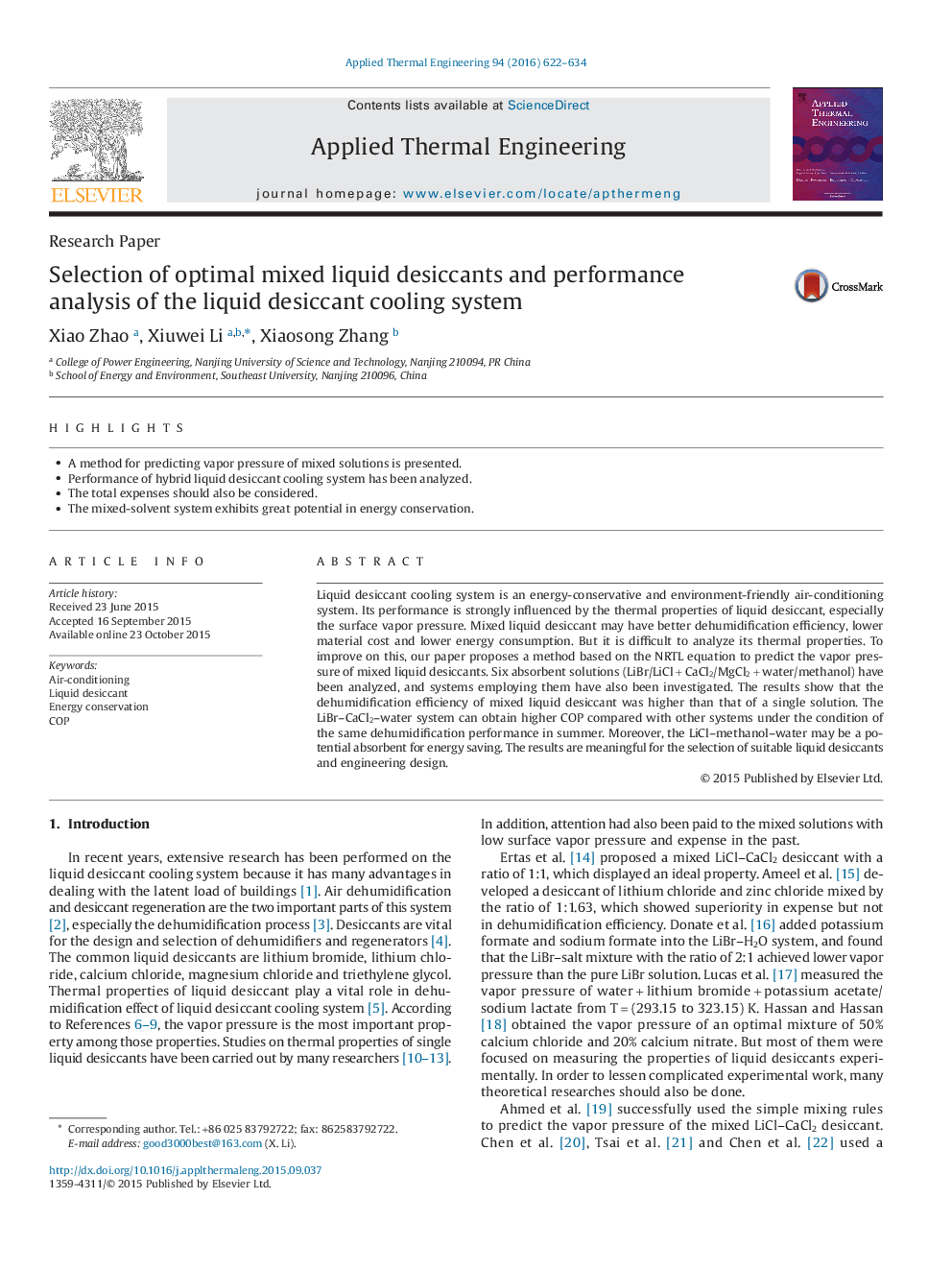| Article ID | Journal | Published Year | Pages | File Type |
|---|---|---|---|---|
| 644817 | Applied Thermal Engineering | 2016 | 13 Pages |
Abstract
Liquid desiccant cooling system is an energy-conservative and environment-friendly air-conditioning system. Its performance is strongly influenced by the thermal properties of liquid desiccant, especially the surface vapor pressure. Mixed liquid desiccant may have better dehumidification efficiency, lower material cost and lower energy consumption. But it is difficult to analyze its thermal properties. To improve on this, our paper proposes a method based on the NRTL equation to predict the vapor pressure of mixed liquid desiccants. Six absorbent solutions (LiBr/LiClâ+âCaCl2/MgCl2â+âwater/methanol) have been analyzed, and systems employing them have also been investigated. The results show that the dehumidification efficiency of mixed liquid desiccant was higher than that of a single solution. The LiBr-CaCl2-water system can obtain higher COP compared with other systems under the condition of the same dehumidification performance in summer. Moreover, the LiCl-methanol-water may be a potential absorbent for energy saving. The results are meaningful for the selection of suitable liquid desiccants and engineering design.
Related Topics
Physical Sciences and Engineering
Chemical Engineering
Fluid Flow and Transfer Processes
Authors
Xiao Zhao, Xiuwei Li, Xiaosong Zhang,
